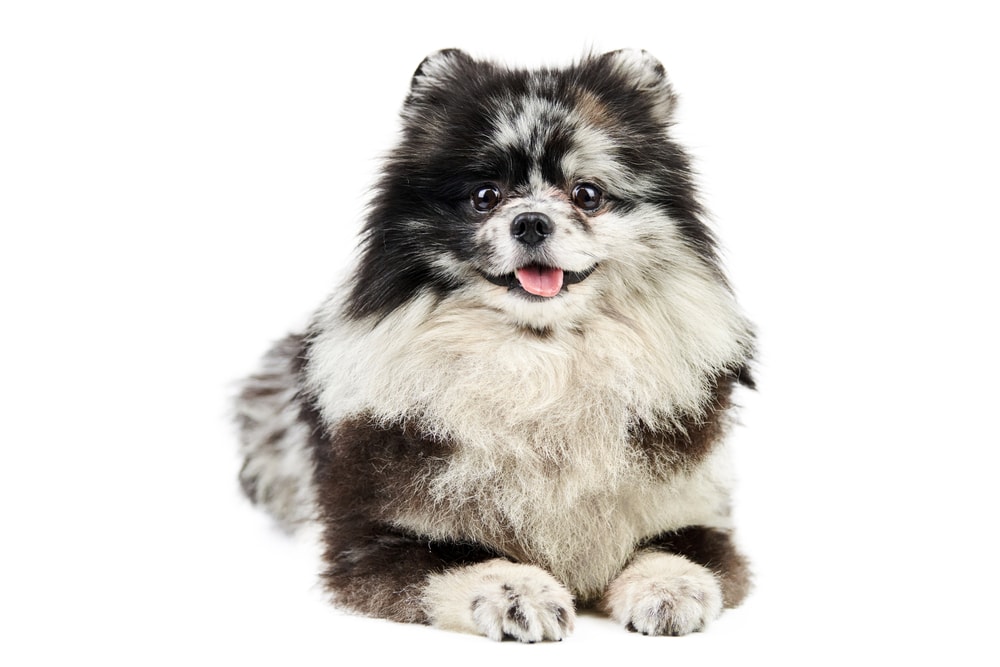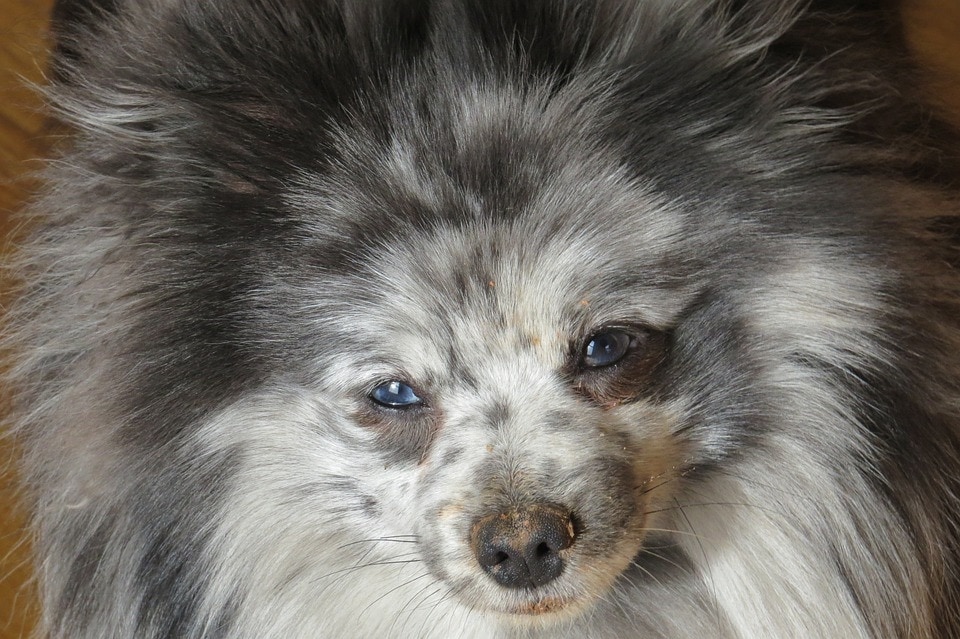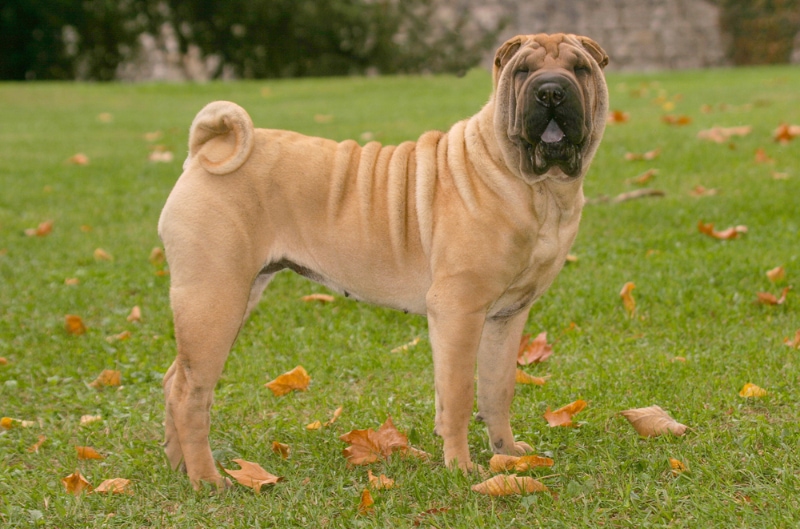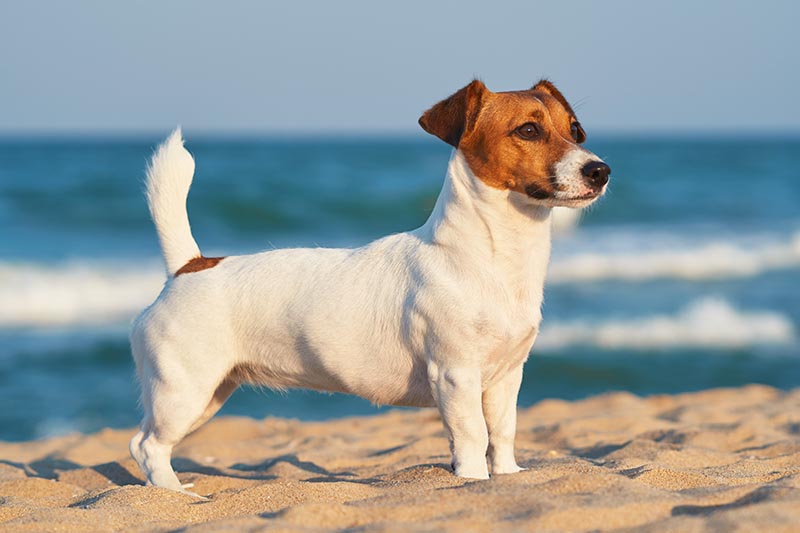Merle Pomeranian: Facts, Origin & History (With Pictures)
By Jordyn Alger
Updated on

Pomeranians are considered by many to be ideal companions. Their sweet faces, vibrant personalities, and luxurious coats make them wildly popular. It comes in many unique colors and patterns, with merle among them.
Merle dogs will often have a mottled or speckled coat, but this pattern doesn’t just affect the appearance of your dog’s fur. Merle can also impact the dog’s skin and eye color. Merle Pomeranians are incredibly unique. To learn more about these special dogs, keep reading below.
The Earliest Records of Merle Pomeranians in History
The Pomeranian breed is named after the region of Pomerania, which is an area in northeast Europe that today makes up parts of Poland and Germany. Hundreds of years ago in Pomerania, the ancestors of the Pomeranian were bred from larger Arctic sled dogs. However, the first records of the breed appear in the late 18th century.
Merle colors did not exist in the earliest days of the Pomeranian breed. Early descriptions of the Pomeranian mostly depict it as a cream, white, or black dog. Introducing the merle gene to the Pomeranian breed is a relatively recent phenomenon.
Some Pomeranian breeders have expressed concern over the sudden appearance of the merle color in Pomeranians, although many other Pomeranian colors are also new. While some remain hesitant about the merle Pomeranian, others are eager to bring one home for themselves.
How Merle Pomeranians Gained Popularity
The popularity of the Pomeranian kicked off in the late 1800s when Queen Victoria of England was introduced to the breed. She became enamored with the little toy dog while on a trip to Italy, and when she returned to Britain, she brought several Pomeranians with her.
Her love for the breed quickly propelled the Pomeranian into the spotlight. She is credited with instituting a breeding program that brought the Pomeranian down from 20 or 30 pounds to its current size.
During the early 1900s, the Pomeranians were brought to the United States, and the breed experienced another surge in popularity. The very first specialty show for Pomeranians was held in 1911, and by the middle of the 1900s, Pomeranians were one of the most beloved breeds in the United States.

Formal Recognition of the Merle Pomeranian
In 1888, the American Kennel Club (AKC) officially recognized the Pomeranian. It has remained steadily popular for years, recently ranking among America’s top 25 dog breeds. There are many officially recognized Pomeranian color patterns, and the merle is among them.
However, that is not the case everywhere. Although the AKC officially recognizes merle Pomeranians, they are not recognized in many other countries.
 Top 3 Unique Facts About Merle Pomeranians
Top 3 Unique Facts About Merle Pomeranians
1. The Pomeranian Has Been the Companion of Notable Historical Figures
Queen Victoria of England is not the only famous figure to own a Pomeranian companion. Pomeranians have been adored by other notable individuals throughout the years, boosting their popularity even further. Some figures known for their love of Pomeranians include Wolfgang Amadeus Mozart, Theodore Roosevelt, Elvis Presley, Jean Harlow, and Harry Houdini.

2. Merle Pomeranians Should Never Be Crossed
Part of the reason that merle Pomeranians are so controversial is that there is a higher chance for health defects. Although most merles are considered healthy, two should never be bred together. That is because the chances of deafness, blindness, and other health complications increase. The result of such unethical breeding is called a Double Merle, and it is condemned due to the cruelty of the act.
3. There Are Over 20 Color Variations of Pomeranians
Merle Pomeranians aren’t the only special variations of the breed! The dog has over 20 unique color patterns accepted by the AKC. Some colors are as predictable as black, white, and blue, while others are more exciting. There are tri-colored Pomeranians, beaver Pomeranians, and even wolf-sable Pomeranians.

Does the Merle Pomeranian Make a Good Pet?
The merle Pomeranian is unique, beautiful, and beloved. But does it make a good pet? The color of a dog’s coat has no effect on personality, so the merle Pomeranian is just like his other Pomeranian pals. They are alert, inquisitive, and extroverted. Whether you are interested in taking a brisk walk or sitting on the couch to snuggle, the Pomeranian is eager to join you.
Their fluffy double coats require extensive care. Their undercoat is dense, while the outer coat is long, so regular brushing is necessary. Pomeranians should be brushed a few times weekly with a brush that can go down to the skin. Teeth brushing will also be important to a healthy Pomeranian’s grooming schedule, as the breed can be prone to dental issues.
Pomeranians are incredibly affectionate dogs, and they do well with families. They don’t require much exercise, although they are full of energy. A brisk walk or a fun game of tug-of-war are great ways to help your Pomeranian burn some energy.
Conclusion
The Pomeranian is a remarkable dog with a fascinating history. Although the merle color pattern is a relatively new phenomenon for the breed, it is still beloved by many. It is only officially accepted by the AKC at this time, but that doesn’t stop fans of this breed from searching for responsibly bred merle Pomeranians. If you are interested in a merle Pomeranian, search for a reputable breeder or visit your nearest animal shelter.
Featured Image Credit: kelleycolleen, Shutterstock













